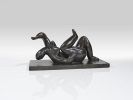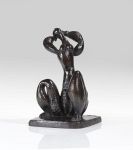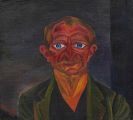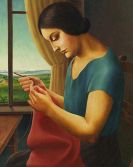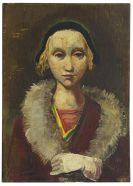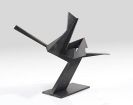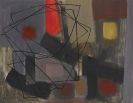
Norman Bel Geddes
Adrian
1893 -
New York
1958
After studying art at the Cleveland Institute of Art and the Art Institute of Chicago, Norman Bel Geddes started out working as a set designer in Los Angeles. From 1918 Norman Bel Geddes designed sets for the Metropolitan Opera in New York. In 1925 he returned to Los Angeles and worked in Hollywood. Contact with the architects Frank Lloyd Wright and Erich Mendelsohn induced Norman Bel Geddes to turn to architecture and design.
Norman Bel Geddes belonged, along with Raymond Loewy, Henry Dreyfuss, and Walter Dorwin Teague, to the first generation of American industrial designers, who designed railroad trains, buses, cars, aircraft, and machinery. Further, they used the aerodynamic streamlined form as an aesthetic device, applying it to machinery, smaller appliances, lamps, and furnishings.
Norman Bel Geddes was an especially eloquent advocate of the teardrop form. From 1928 Norman Bel Geddes designed futuristic-looking cars for the Graham Paige company. Norman Bel Geddes designed the celebrated General Motors Pavilion, the "Futurama", for the 1939 New York World's Fair, his vision of tomorrow's world as a landscape filled with model buildings.
Norman Bel Geddes also expounded his philosophy of design and his vision of the future in the book "Horizons" (published in 1932) and in "Magic Motorways" (1940).
Would you like to sell a work by Norman Bel Geddes?
Infos for seller

